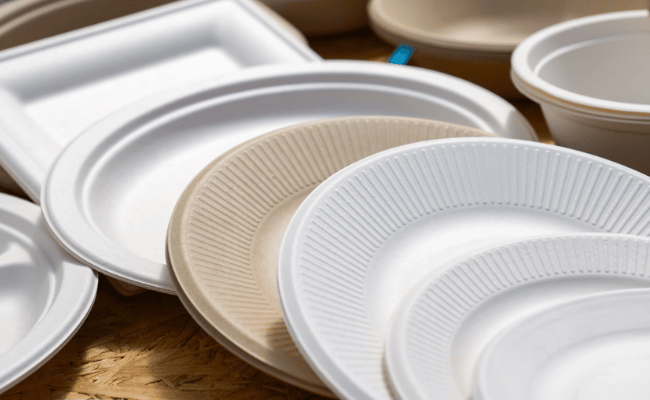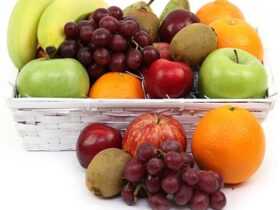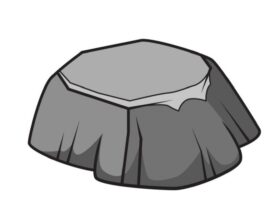Introduction
The manufacture of the product and its usage is critical to the debate over whether something should be durable or disposable.
The number of times a reusable plate is used to replace hundreds of Compostable paper plates over many years will determine how eco-efficient it is.
The advantage of the disposable container over the reusable plate is that it does not require washing.
What is dining room ceramic ware?
Ceramic dishware is the name for tableware that is made only from ceramic materials. Typical examples of ceramics include pottery, terracotta, fine china, bone china, porcelain, glazed earthenware, paper clay, and stoneware.
The bulk of tableware consists of cutlery, glasses, plates, bowls, mugs, vases, and all other culinary tools used for cooking, serving food, and setting the table. Tableware made of ceramic is often referred to as “crockery.”
Ceramics have been used as tableware from the dawn of humankind. Also, they prefer cooking using ceramic cookware.
This is because ceramic is considered the healthiest material on the market. Ceramic products are non-porous and safe to use.
The advantages of ceramic plates include these. The reason why it is superior to Compostable paper plates
Clay is burned at high temperatures to produce ceramic. Ceramics may be found everywhere. Products made of ceramic are used in daily life.
They are not compressible and have a stiff, brittle nature. Moreover, ceramic cookware is employed for roasting and baking. Most consumers like ceramic cookware since it can be used for dry and wet cooking.
Furthermore, they don’t adhere to the food, preventing it from burning. After use, cleaning them is easy.
Let’s examine a few of its advantages:
Safe for the body
Millions of years passed before ceramic was discovered to be healthful and food-safe. It has been noted that ceramic’s constituent parts are thought to be non-toxic.
Friendly to heat
Ceramic utensils are heat-resistant. You can cook food on a stove, in an oven, or a microwave. In contrast to plastic, it may be heated without melting or splitting.
This is so that heat is distributed evenly to the gas chambers by the product’s ultimate material, porcelain, which is also its main component. Yet, not all ceramics can withstand heat; only a few cans. Be sure the specific utensil is heat-friendly before purchasing.
Durability
Porcelain dinnerware is renowned for its toughness. When porcelain is burned at a very high temperature, it is solid and non-porous.
While they appear frail, they are sturdy. Next time, check to see if the ceramic dinnerware contains porcelain.
Non-sticky
Ceramic utensils have been proven to be non-stick. They have a glass-like smoothness that makes washing the dishes a breeze.
Whether cooking a dish on ceramic cookware or eating a meal, the utensil is spot-free. Moreover, they clean up easily with only soap and water.
Versatile
Porcelain tableware is available in various shapes, sizes, and colors. They may be set out on the table in different culinary and seasonal arrangements.
Also Check: What are the disadvantages of paper plates?
Many alternatives and reasonable prices
Tableware made of ceramic is available in various styles and colors. Yet of all the materials, porcelain is regarded to have the best qualities. At a reasonable price, choose the most excellent or elegant design for your table.
In the past, only nobility and affluent individuals could purchase porcelain dinnerware due to its high cost. But, with technological advancements and the creation of new processes, tableware is now reasonably priced.
It does not include chemicals or vinyl.
Plastic and chemicals may be harmful to our health. They may harm our bodies. Food storage containers and other materials used in the home and construction contain these substances.
On the other hand, certain ceramics are free of chemicals and may be an excellent choice for you.
Unlike plastic, it doesn’t absorb chemicals.
Ceramic goods cannot absorb chemicals since they are non-porous. On the other hand, the chemicals in plastic tableware can interact with food and pose a health risk.
Thermodynamic stability
Ceramics’ extremely stable thermodynamics prevents the heat from dissipating fast. As you know, our food tends to hold together better when exposed to quick quenching changes and specific temperature fluctuations.
Moreover, ceramics could be better heat conductors. As a result, relatively little heat is transferred compared to glass, steel, and other metal utensils. Tableware is renowned for keeping hot meals and boiling water for an extended period.
Chemical resistance
Porcelain is used often in our homes and has a degree of resistance to alkalis, acids, salts, and atmospheric carbon dioxide. If consumed repeatedly, it can hurt a person’s internal organs.
Conclusion
As is well known, ceramic tableware has been used by humans for a very long period. Although several cultures and traditions throughout the globe contributed to its discovery, its benefits, and organic makeup also made us think of a connection to nature’s cycle.
Read More: How do I get rid of ants permanently?











Leave a Review